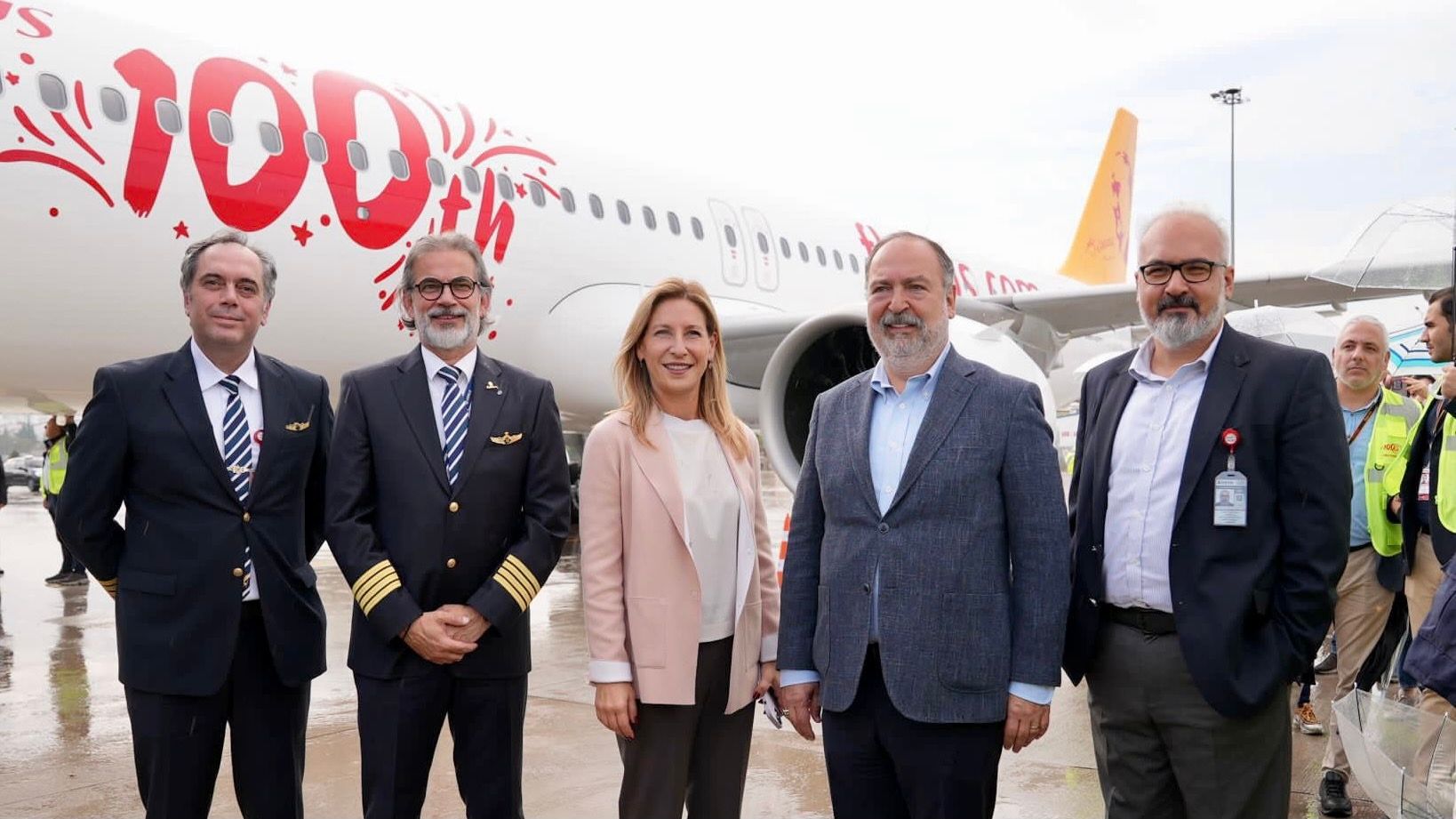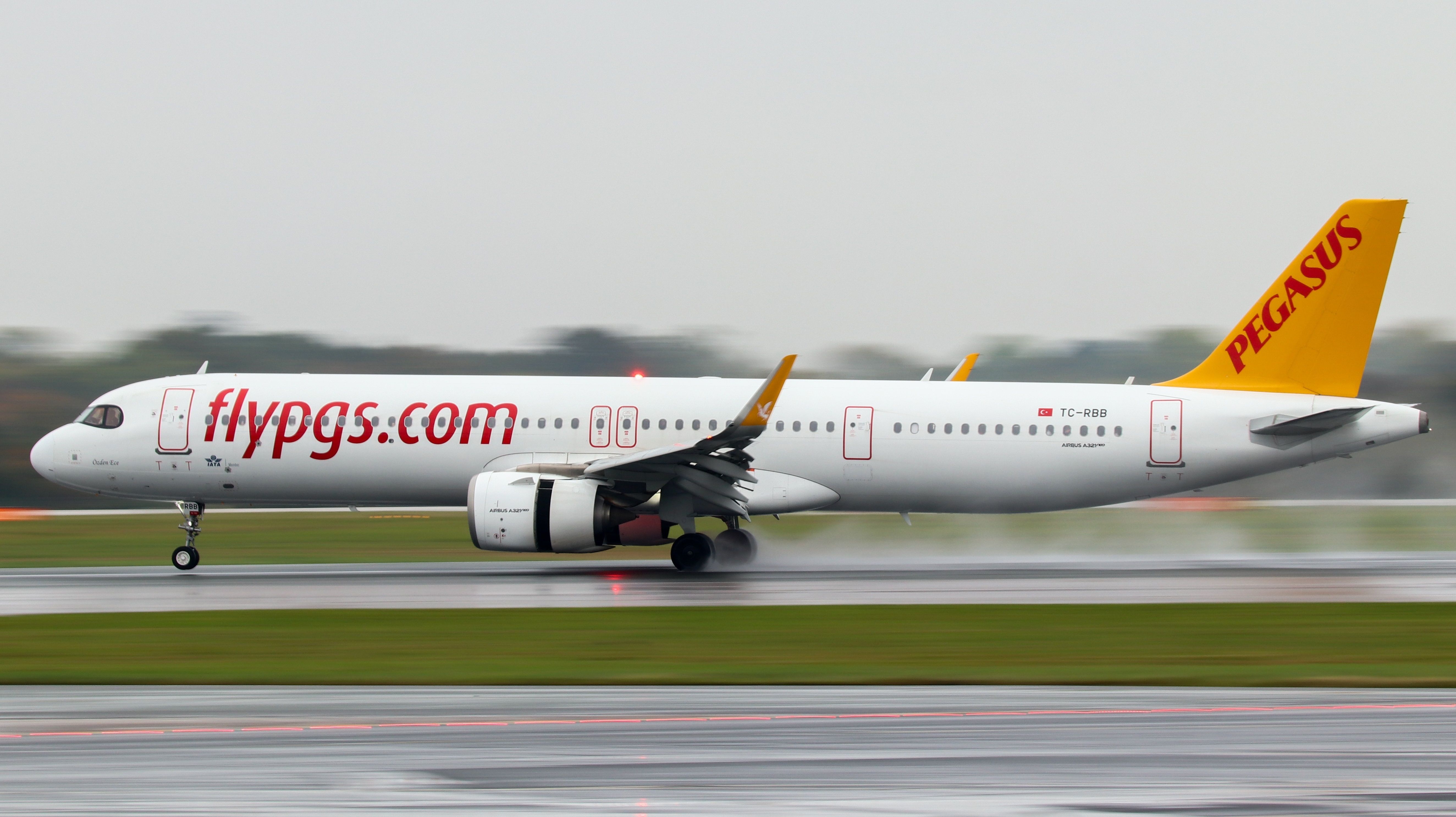Summary
- Turkish carrier Pegasus celebrates Turkey’s 100th anniversary with the arrival of its 100th aircraft, an Airbus A321neo named Cumhuriyet (Republic).
- The airline continues to modernize its fleet with the addition of the A321neo, which has an average age of only 1.5 years.
- Pegasus has achieved significant growth, including the highest operational profitability in the world last year.
This Month, Turkey will celebrate 100 years since it became a republic. Ahead of the big day on 29th October, Turkish carrier Pegasus yesterday received its 100th aircraft.
National pride
The new arrival is an Airbus A321neo, appropriately nicknamed Cumhuriyet (Republic) to commemorate Turkey’s centenary. Holding registration number TC-RDP, the aircraft joins the airline’s fleet of Airbus A320s and Boeing 737-800s.
TC-RDP left Hamburg at 12:39 Saturday afternoon before landing at Istanbul Sabiha Gokcen International Airport two hours and 57 minutes later at 16:36. With 34 A321neos in the fleet, the low-cost carrier continues to modernize its holdings, with the model offering an average age of just 1.5 years.
The plane stands out with a special livery to mark the anniversary. Along with ‘100th’ planted on the fuselage, spotters will notice a silhouette and signature of Mustafa Kemal Atatürk, the Turkish republic’s founder, on its tail.
Altogether, this aircraft represents a period of substantial growth for Pegasus. It has gone from strength to strength since being founded over three decades ago. The airline notes that it had the highest operational profitability in the world last year, with revenue rising by 139% to $2.6 billion.
Moving toward an All-Airbus fleet
To find out more about how the carrier has managed such healthy numbers, Simple Flying spoke with Pegasus CMO Ahmet Bağdat at the World Aviation Festival in Lisbon this week.
Bağdat shared:
“We were ready for the quick turn in demand. We anticipated a quick shift, and it turns out we were right. Compared to other airlines, we kept our employees and labor force as much as we could. So, we were ready.”
Photo: Bradley Caslin / Shutterstock
Along with this personnel retention, the airline also took steps to ensure it had the right vessels to cater to demand. As such, it continued to take deliveries of aircraft throughout the dark days of the pandemic and into the busy months of recovery.
Bağdat added:
“We are super excited about the new aircraft. We believe that the Airbus A321neo is the right decision for us, especially in terms of fuel efficiency. It fits into our business model and the sustainability strategy. We are moving to a full-Airbus fleet based on our network. Until the end of 2029, we will receive 78 more aircraft, with huge expansion ahead of us.”
There is plenty of action ahead for Pegasus. After all, it increased its A321neo order by 36 units in July. Altogether, 150 Airbus A320neo family aircraft are expected to be delivered by 2029, highlighting the ambitions of the airline.
What are your thoughts about Pegasus’ success over the years? What do you make of the airline’s overall fleet? Let us know what you think of the carrier and its prospects in the comment section.
Source: Daily Sabah; ch-aviation.com


